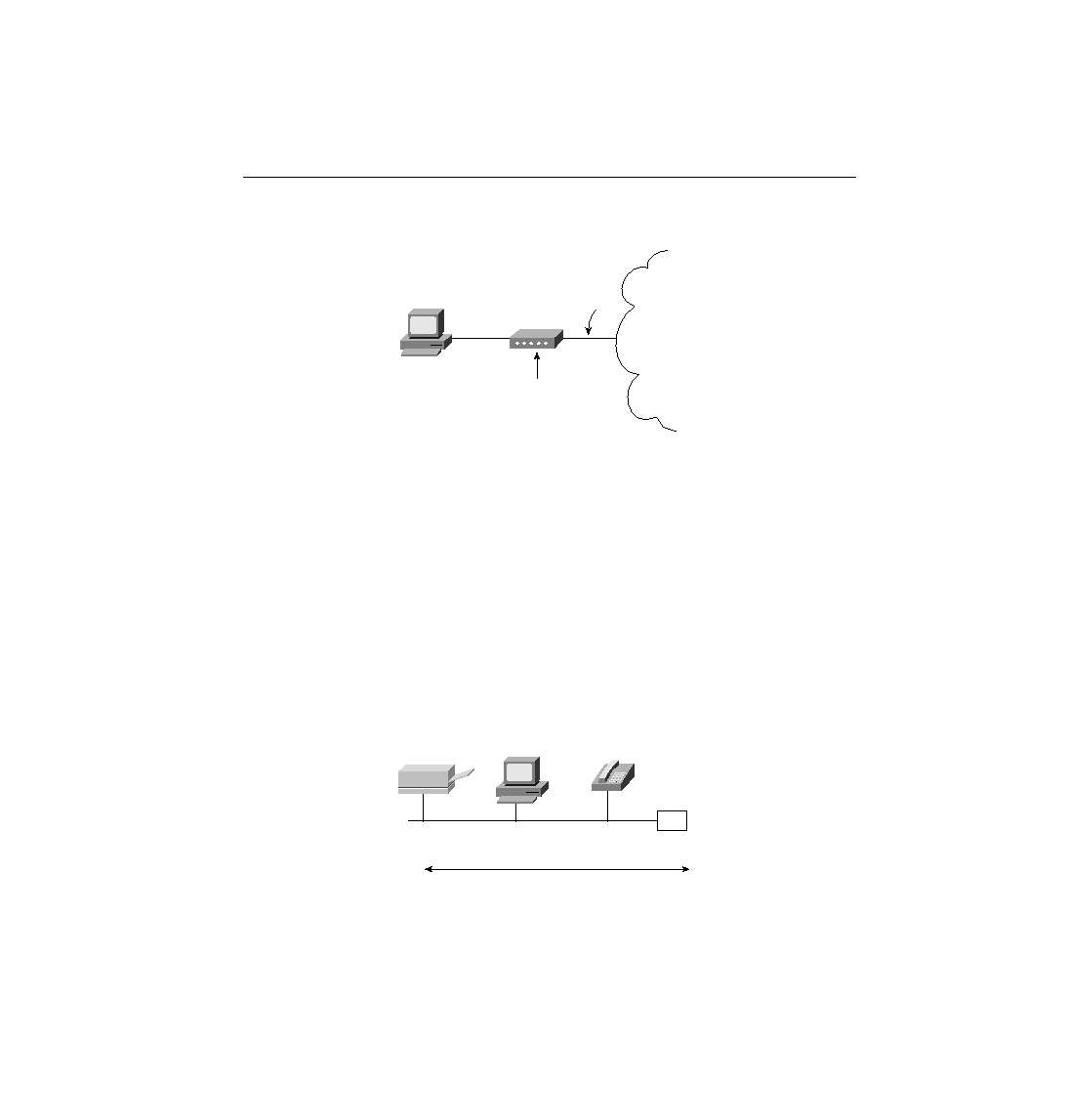
terminology from the ISDN specifications. The home user orders the service, and the telco
offers to sell the user one of several "ISDN modems." What is actually received is a TA and NT1
in one device. A PC uses a serial port to connect to the TA, which uses reference point R.
However, the terms reference point, TA, and NT1 are almost never used by providers, hence the
confusion.
SBus allows multiple devices to share the same BRI by sharing the S reference point. SBus is
a great idea, but it has not been deployed extensively. SBus takes the S reference point and
allows multiple TE1s to connect to the same NT1. This enables multiple TE1s to use the same
BRI. If all the TE1s were data devices, then instead of using an SBus, a better solution would
be to place all TE1s on a LAN and use an ISDN-capable router. To support ISDN phones, fax,
video, and data TE1 devices, however, the SBus can be used. Figure 8-24 shows a basic SBus
topology.
BRI is shared among the TE1s, the SPID received in a call setup request no longer uniquely
identifies the TE1. Therefore, a suffix called a subaddress is added to the SPID. Each TE1 on
the SBus uses a different subaddress. The service provider connected to this NT1 and to any
other NT1 from which calls are set up must support subaddressing before the user can use SBus.